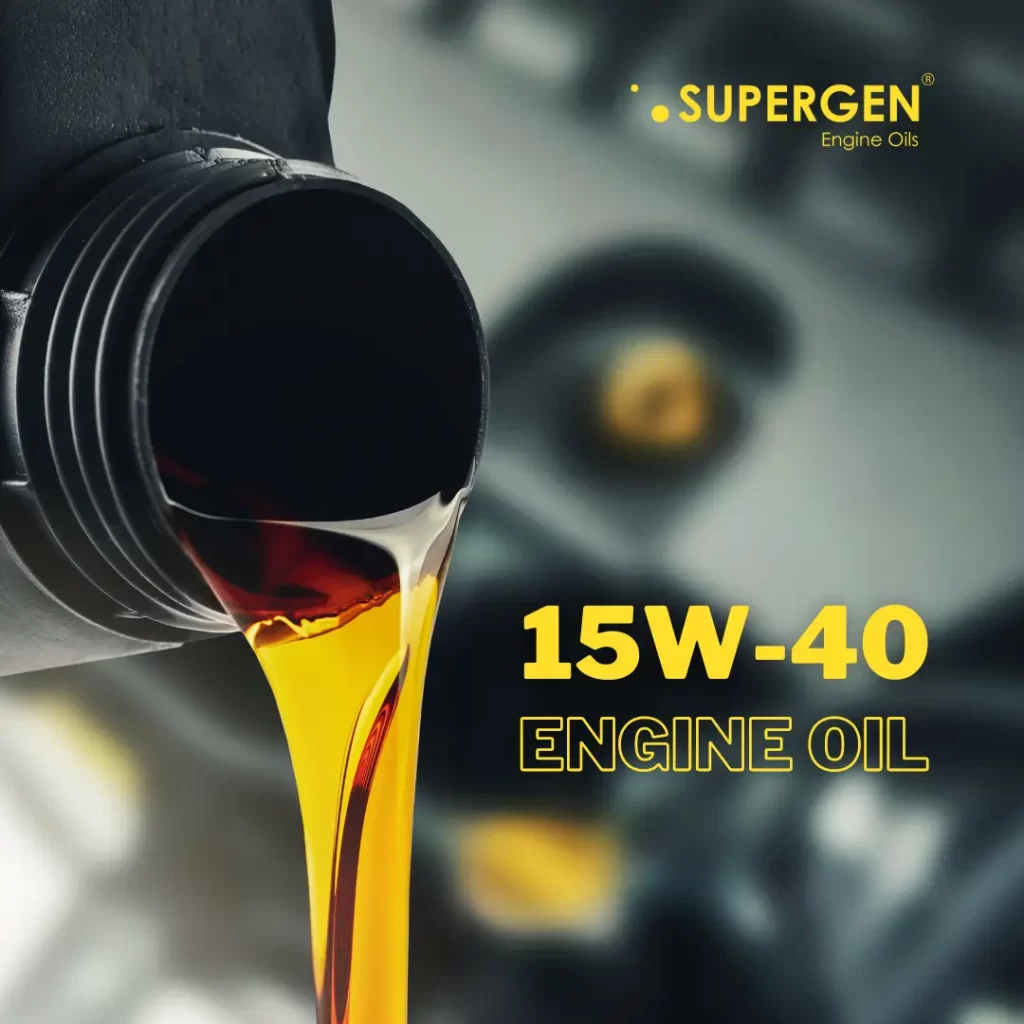Engine oil is meant to keep the engine running smoothly. It lubricates the moving parts and prevents wear caused by friction. Furthermore, it protects the engine from rust, corrosion and any other contaminants. Since different engines have different requirements, engine oils come in various grades. These grades are determined based on the viscosity of the oil. Each vehicle comes with a recommended grade of engine oil which should be used for optimum performance. 15W-40 is one such common engine oil grade that is generally recommended for diesel engines. Thickness of oil changes according to the temperature it is at. Oil tends to thicken in the cold and becomes thinner in the heat. This is why engine oil grades have two numbers on them. In 15W-40, the first number i.e. 15, indicates the thickness level in cold temperatures. This is why it is followed by ‘W’, which stands for ‘winter’. The second number i.e. 40, indicates the thickness level of the oil in hot temperatures.
What is the difference between 5W-40 and 15W-40 oil?
As mentioned before, engine oils come in different grades, which are based on their viscosity levels. Each oil grade has two numbers on it, showing the thickness levels at cold as well as hot temperatures. As a rule, the lower the first number is i.e. the number before the W, showing the viscosity in the cold, the thinner the oil is. Hence 5W-40 grade oil is thinner than 15W-40 oil, since 5 is lower than 15, indicating thin oil. The difference in viscosity is the major one, but there are some other differences too. For instance, 5W-40 is a grade found only in fully synthetic oil, but on the other hand 15W-40 is a mineral or conventional oil grade as well. Furthermore, 15W-40 is generally used in diesel engines while 5W-40 is used in petrol engines. This also means that they have differing additive profiles, depending on the fuel it is meant for.
Can I use 5W-30 instead of 15W-40?
Every engine has specific requirements from the engine oil. These depend not only on the engine design, but also the model of the car, the fuel used, the circumstances of its usage, the size of the vehicle, etc. This is why engine oil comes in different grades based on thickness levels. Each car or bike comes with an owner’s manual which specifies which grade of engine oil is best for that particular model. Vehicle owners are advised to follow the recommended engine oil grade, to optimise engine performance and avoid any issues. Since 5W-30 and 15W-40 are two different grades, with differing thickness, they cannot be used interchangeably. Most of the time, 15W-40 is suitable for diesel engines, and it has a lot of anti-wear additives. On the other hand, 5W-30 is often recommended for petrol engines and has a different additive profile. Furthermore, they vary a lot in thickness levels, with 15W-40 being a lot thicker than 5W-30. This is why they should not be used in place of the other and you should always follow the recommended engine oil grade as given by the manufacturer in the owner’s manual.
Is 15W-40 better than 10W-30?
15W-40 and 10W-30 are two different grades of engine oil. 15W-40 has a higher viscosity level, while 10W-30 is thinner. There are various advantages and disadvantages associated with both thick and thin oils. Thicker oils offer a higher degree of protection since they form a thicker barrier between the internal moving parts. This is why, friction is reduced to a large extent and the parts don’t wear out soon. On the other hand, the engine requires a higher amount of energy to pump thick oils, since they offer more resistance. This has an effect on the fuel economy. Thin oils offer less resistance and are easier to circulate, meaning they offer better mileage and higher savings on fuel. However, thin oils may not last as long as thick ones and also don’t offer the same level of protection. The decision as to which oil to use rests on the needs of the driver. For instance, someone who is driving an old car would prefer more protection and thus opt for a thicker oil. Similarly, someone wanting higher mileage would opt for thinner oils. Furthermore, the temperature you drive in also affects the oil choice. 10W-30 might be the better choice in colder temperatures, since it is quite thin and 15W-40 would be preferred in hot climates. There is no blanket answer to which of these two oils is better and the answer would vary according to the situation. Hence, it is best to read the owner’s manual and follow the manufacturer recommended engine oil grade.










